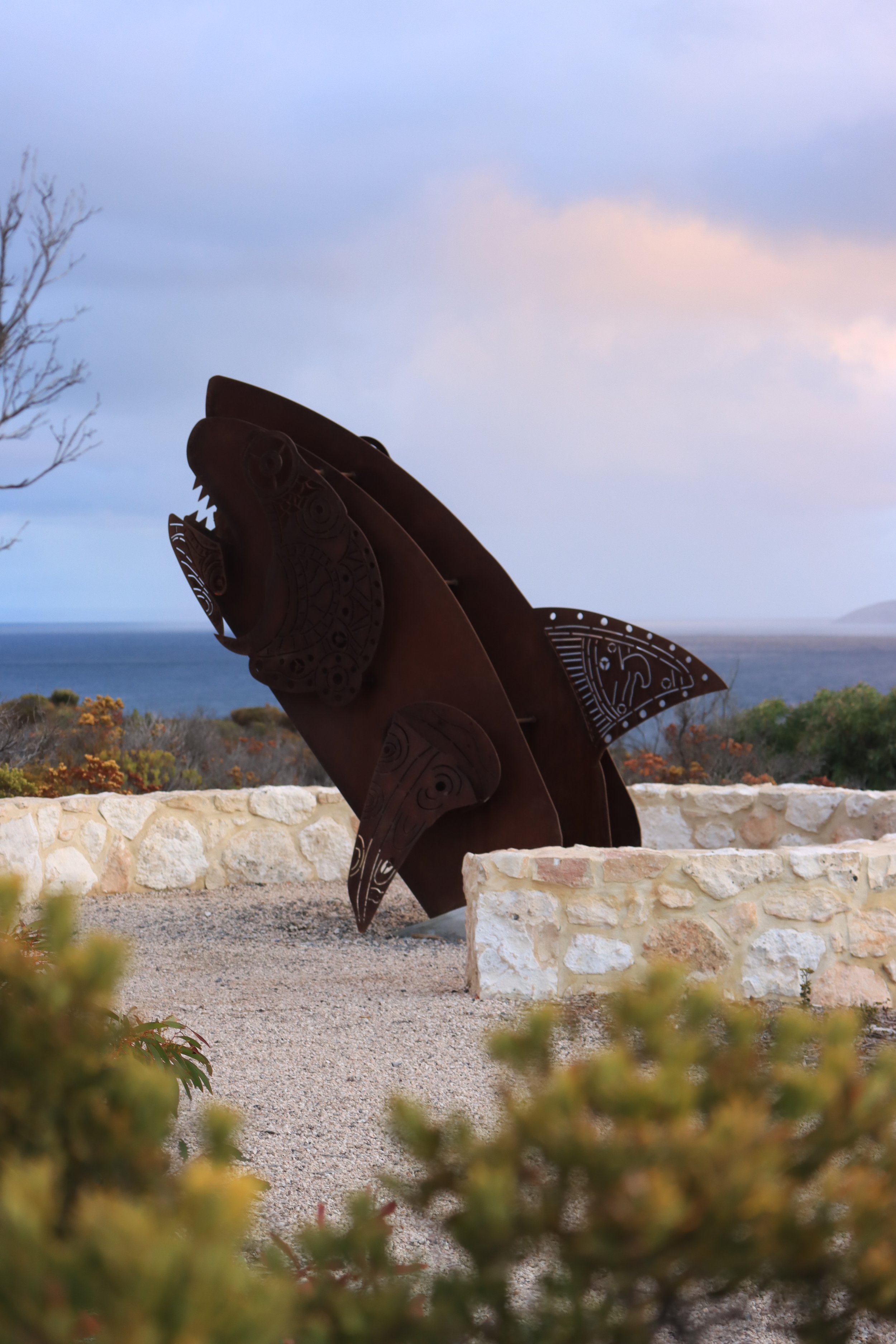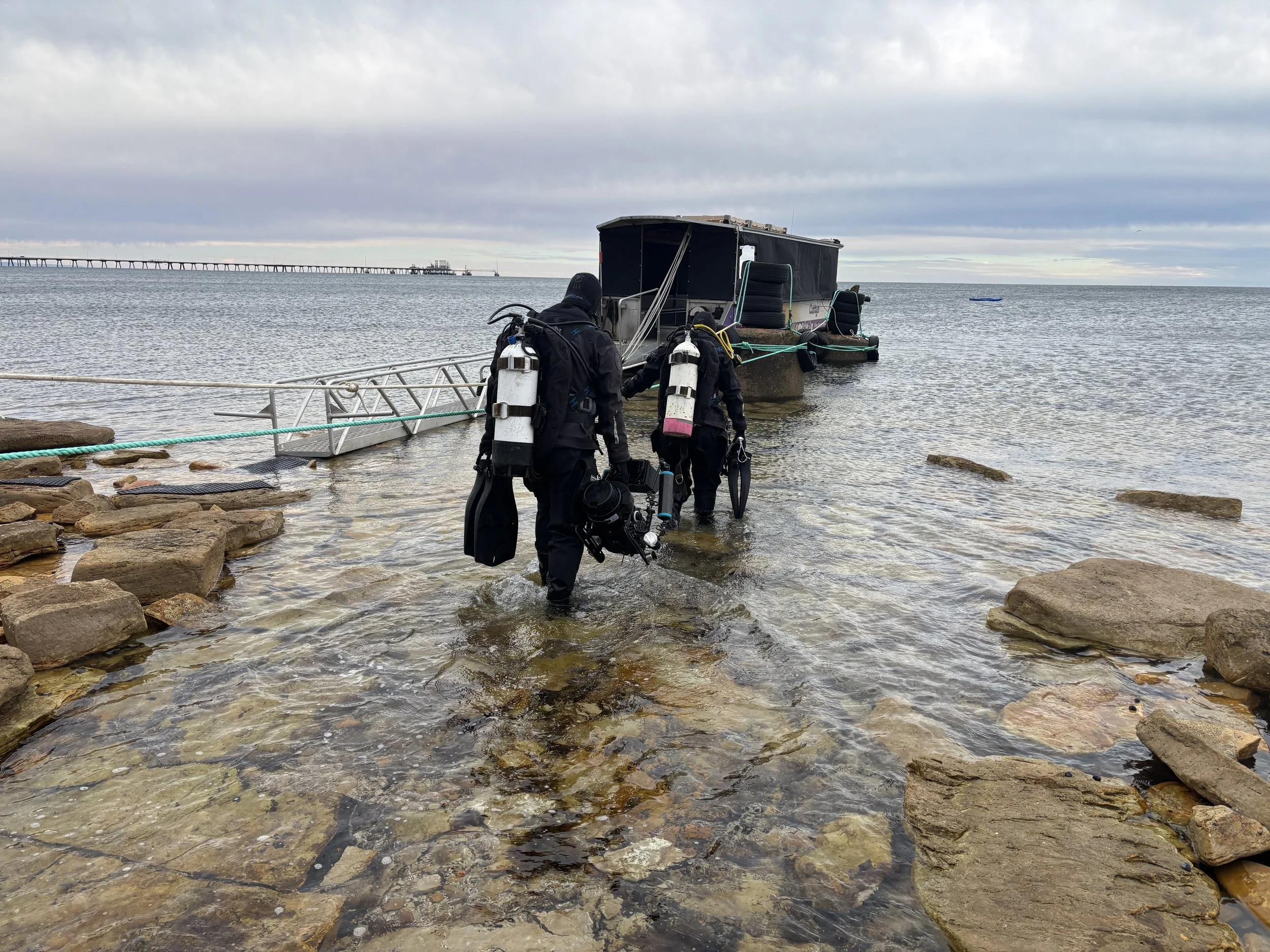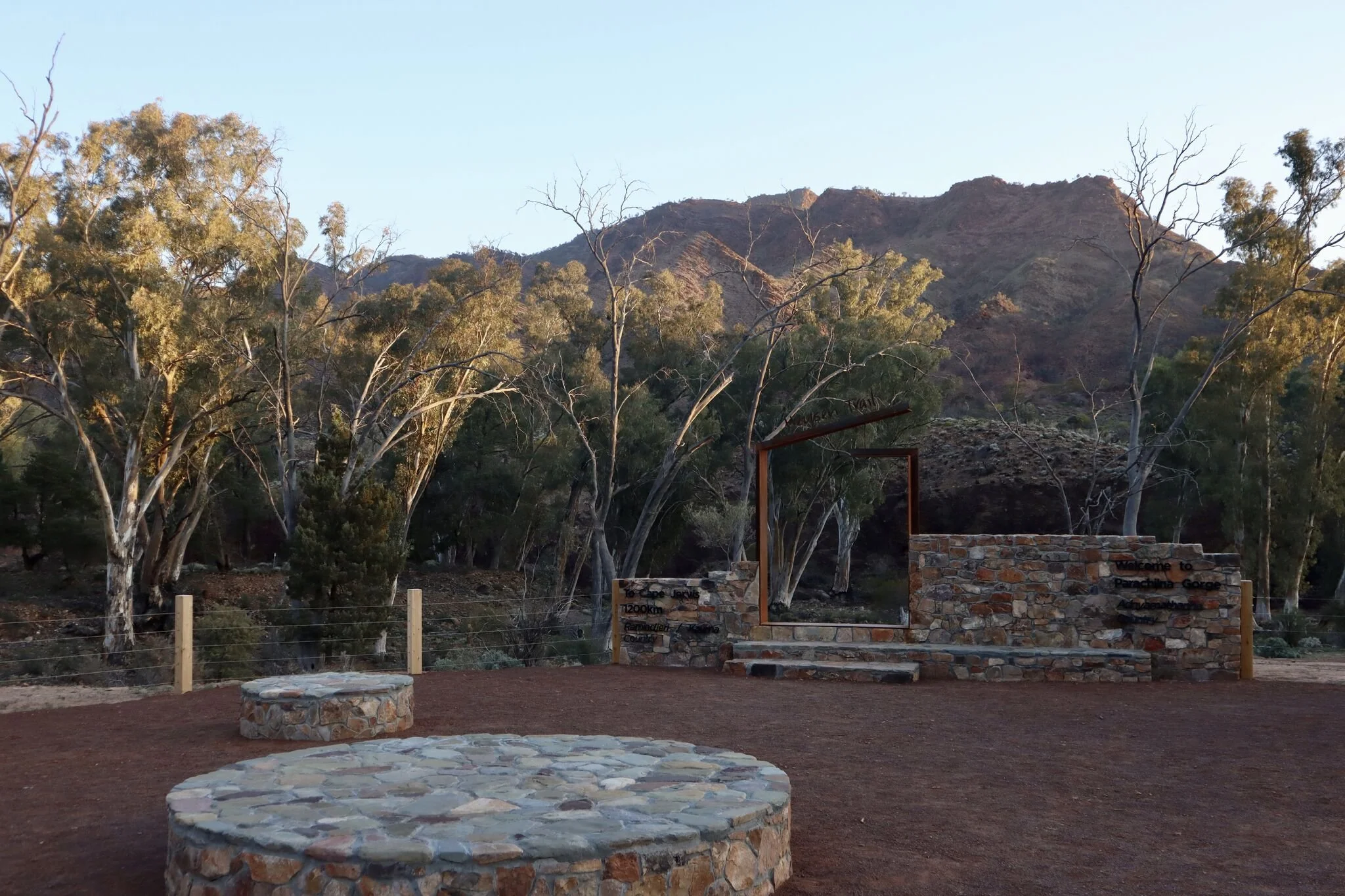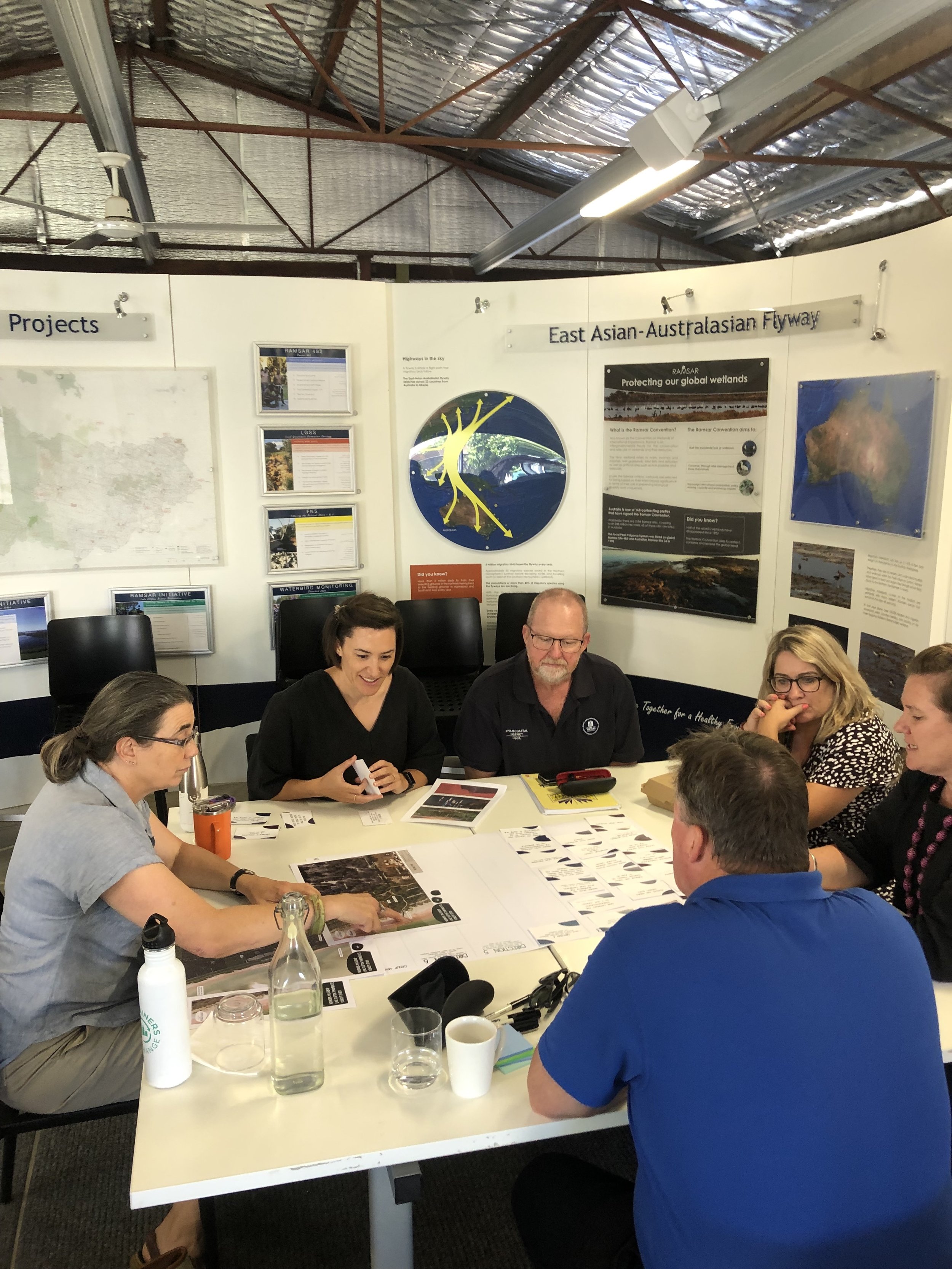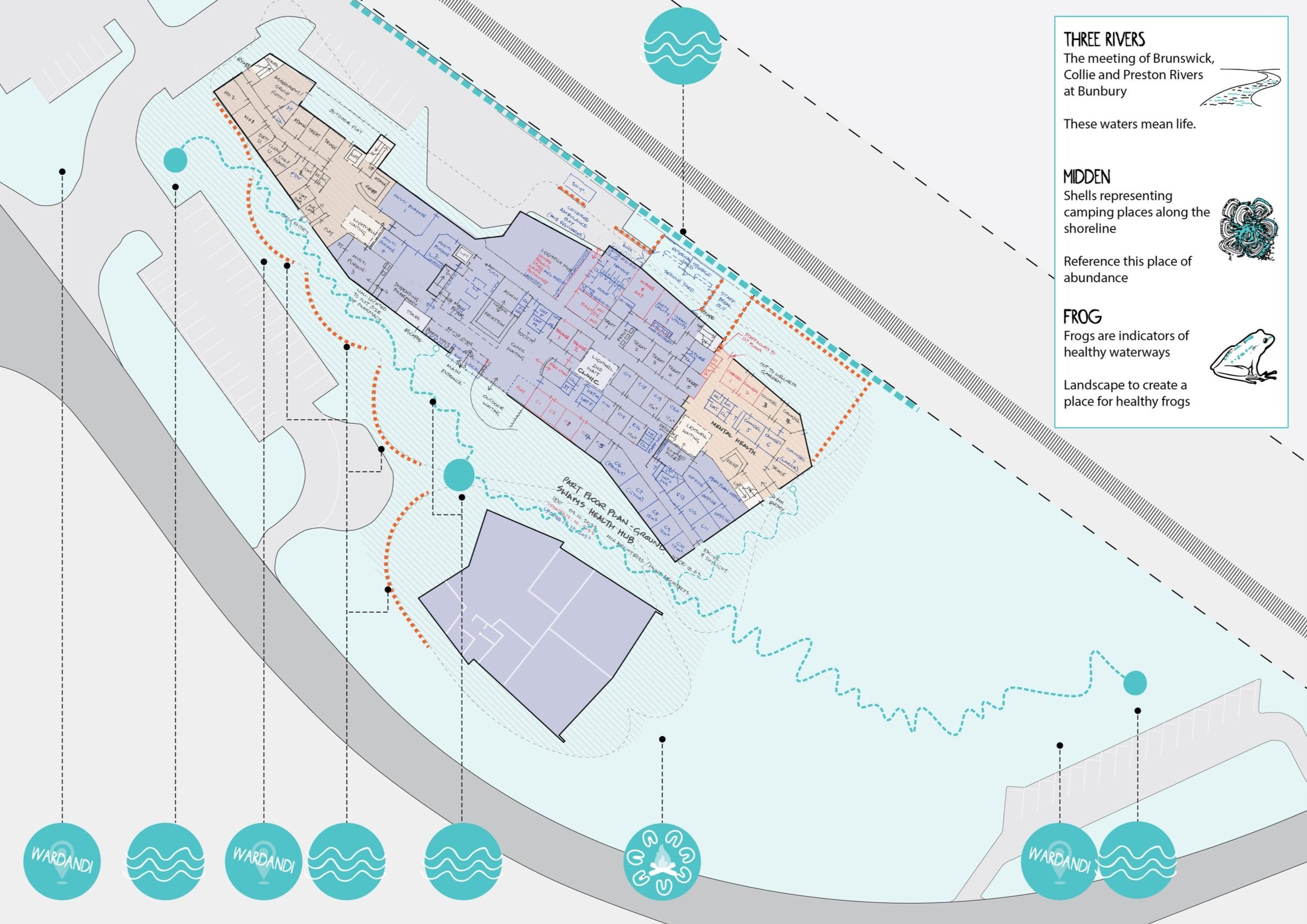Projects
FLINDERS RANGES GEOLOGICAL SITES - ADNYAMATHANHA COUNTRY (FLINDERS RANGES, SA // 2021- ongoing)
The South Australian Government is leading a bid for World Heritage listing of key geological and palaeontological sites across the Flinders Ranges, tracing the ‘Dawn of Animal Life’. BC has ongoing involvement in caring for and presenting several of these sites.
Working closely with palaeontologists, pastoralists, Adnyamathanha Traditional Owners, and park agencies, we have delivered work ranging from strategic planning and concept design through to construction project management—primarily at Ikara–Flinders Ranges National Park, Vulkathunha - Gammon Ranges National and Nilpena Ediacara National Park.
A site we get really excited about is Nilpena. Here, ongoing management, design and construction works balance the dynamic but fragile nature of ‘working’ paleontological sites with providing a visitor experience that remains true to the pastoral station context and Aboriginal heritage. This project has allowed fossils to respectfully remain in-situ - we are passionate about keeping fossils on Country, and we’ve had the opportunity to eat plenty of flies whilst working on stabilisation works on the hillside.
YIPTI YARTAPUULTIKU ABORIGINAL CULTURAL PLACE - KAURNA COUNTRY (PORT ADELAIDE-ENFIELD , SA // 2020 - ongoing)
For more than 20 years, Kaurna and other Aboriginal peoples connected to the City of Port Adelaide Enfield sought the creation of an Aboriginal Cultural Centre.
From 2020, Brave and Curious supported a collaborative, culturally led process to realise this vision. This process involved visioning, master planning, feasibility, interpretation, cultural mapping and place design, with a strong focus on governance and long-term management. Engagement was led by Aboriginal champions Rodney Welch and Susan Dixon, with BC working in a facilitative role alongside Port Adelaide Enfield staff, Ashley Halliday Architects and WAX Design.
Construction of Yitpi Yartapuultiku - ‘Soul of Port Adelaide’ - was completed in 2025. Yitpi is the largest investment in public open space, environmental restoration and social infrastructure ever undertaken in Port Adelaide. This place, and this culturally guided process of healing and learning, is a testament to the generosity of the Kaurna community. We look forward to ongoing involvement in the living governance and cultural life of the place as it evolves.
Recognition: 2023 International Architecture Exhibition la Biennale Di Venezia – Australian Pavilion Exhibition // SA Awards for Planning Excellence 2022 – Ministers Award & Planning With Country.
DHILBA GUURANDA - INNES NATIONAL PARK CULTURAL STORYTELLING - NARUNGGA COUNTRY (YORKE PENINSULA, SA // 2022 - ongoing)
As part of an exciting co-management agreement at Dhilba Guuranda - Innes National Park (DGINP) between Narungga Traditional Owners and the South Australian State Government, BC were privileged to support a revitalisation of Narungga storytelling on this special coastal Banggara (Country).
Over a number of years we have worked closely with the DGINP Co-management Board, the Narungga Nation Aboriginal Corporation, and the DEW and NPWSSA team to share Narungga values in range of ways throughout the park. In collaboration with Narungga artists, linguists, storytellers and academics we carefully supported a process of identifying, recording and collating appropriate knowledge to share. We then collaboratively designed and implemented a network of co-naming, large scale sculptures, signage and audio and videos shared via an app (www.parks.sa.gov.au/guided-tours-app).
It’s been a privilege to support ongoing revival of Narungga/Nharangga language, and share stories – from great floods and giant kangaroos to the lessons of Widhadha the shark. Appropriately sharing these stories contributes to building a deeper sense of place and truth for visitors and locals, and the process of revisiting this knowledge brings everyone along for the journey.
WHYALLA CUTTLEFISH COAST MANAGEMENT PLANNING - BARNGALA COUNTRY (WHYALLA, SA // 2024 - ongoing)
The annual migration of the Australian Giant Cuttlefish is one of the most spectacular natural events in the Australian marine environment. BC and TRC Tourism have been collaborating with the City of Whyalla, Department for Environment and Water and Barngala Traditional Owners to improve the management and experience of diving along this significant coastline.
Increased visitor numbers along the Cuttlefish Coast have led to significant safety and environmental concerns. Our work has involved working with stakeholders - local scientists, divers and tourism operators - to identify key issues and provide strategic responses. These have included master planning, management planning and direct interventions such as improving both permanent and temporary facilities at the key dive site at Stony Point, where ‘Cuttlefest’ is held during the months of the breeding aggregation.
We have squeezed in a couple of dives as part of this work, however have not yet been able to communicate directly with the cuttlefish themselves.
GUNLOM FALLS TRACK RE-DEVELOPMENT & CULTURAL STORYTELLING - JAWOYN COUNTRY (KAKADU, NT // 2022-2024)
BC and TRC Tourism are proud to have worked with Jawoyn Traditional Owners and Parks Australia on a healing process for this sacred Jawoyn place in Kakadu National Park.
This project involved extensive engagement and collaboration with Jawoyn Traditional Owners and rangers to negotiate removal and remediation of an existing culturally unsafe track, followed by design and construction of a new walkway along an approved alignment that would allow visitors to safely access the upper pools of Gunlom Falls.
The new walking track, constructed from local rock is embedded into a steep section of the 85m cliffs. At a series of rest areas, we worked with Jawoyn knowledge holders to share stories of stone country, this place, flora and fauna and local heritage through signage and artworks.
MAPPING BOODJAR - WHADJUK NOONGAR COUNTRY (WALYALUP FREMANTLE, WA // 2021)
This project involved BC working closely with Noongar Boodjar Language Cultural Aboriginal Corporation, Karda Designs, The University of Notre Dame, Curtin University and Kim Mahood. Mapping Boodjar was funded by the AIATSIS Indigenous Research Exchange Grant.
Mapping Boodjar emerged through an extensive, collaborative research process with Whadjuk Noongar Traditional Owners. This included a lively, meandering day on a small bus led by Elders, followed by a public mapping week where shared knowledge was painted onto a large cultural map.
Our role was to facilitate, listen, and document, with the project’s direction guided by Traditional Owners. The map brings Whadjuk Noongar knowledge and language into the urban landscape, supporting cultural continuity and transformational learning.
HEYSEN TRAIL NORTHERN TRAILHEAD - ADNYAMATHANHA COUNTRY (PARACHILNA, SA // 2024)
We really enjoyed working on this project on Adnyamathanha Yarta with passionate Friends of the Heysen Trail volunteers, local station owners and awesome construction team - the Prestwood family (Wilmington Transport).
The 1200km Heysen Trail is a valuable community asset that allows people to connect with the wonderful bush in South Australia. BC were engaged to design a robust trailhead that would provide a sense of occasional at the beginning or end of this enormous journey at Parachilna Gorge - amongst old red gums, winding creek, cattle yards and rocky peaks.
Our design is set within the existing cattle yards, continuing an existing fence line and using local stone to provide a gateway that references the crumbling stone relics encountered on the trail. The hiking community has embraced the space, and we cross our fingers and toes for the success of our revegetation in the area - in such a remote environment with frequent extreme droughts growing ain’t easy! It’s all hanging in there so far!
WAGYL’S NOOROOK THROMBOLITES CONCEPT STUDY - BINDJAREB NOONGAR COUNTRY (MANDURAH, WA // 2023)
The Thrombolites that exist today at Lake Clifton, Yalgorup National Park are a threatened living relic of the very beginning of life on earth - important to local Bindjareb Noongar people, visiting tourists and the international science community, including NASA.
This study was commissioned by Visit Mandurah and the Peel Development Commission to explore opportunity to enhance the visitor experience at this globally significant site. With TRC Tourism, we undertook extensive collaboration with key local experts and stakeholders to understand the pressure that this fragile lake environment was under, and undertook economic analysis to build a case for investment and tie development strategy in with local businesses.
Our concept design explored an iconic redevelopment that would manage increasing visitor numbers whilst preserving and celebrating the ecological and cultural integrity of the Wagyl’s Noorook Thrombolites.
SWAMS HEALTH HUB CULTURAL VISIONING - WARDANDI NOONGAR COUNTRY (BUNBURY, WA // 2023)
SWAMS (South West Aboriginal Medical Services) provide vital, culturally led Aboriginal Medical Services across South West WA and are delivering a new Health Hub precinct in Bunbury. This project brings the opportunity - and challenge - of creating a place that responds to complex cultural, community and medical needs.
We were commissioned to collaboratively develop Health Hub Guiding Themes and Cultural Direction, working closely with Wardandi Elders and SWAMS First Nations staff. This process identified a strong Noongar cultural foundation to support community ownership and high-quality health and wellbeing outcomes. The resulting cultural direction now guides decision-making across scales, from strategy and master planning through to design detail and material selection.



